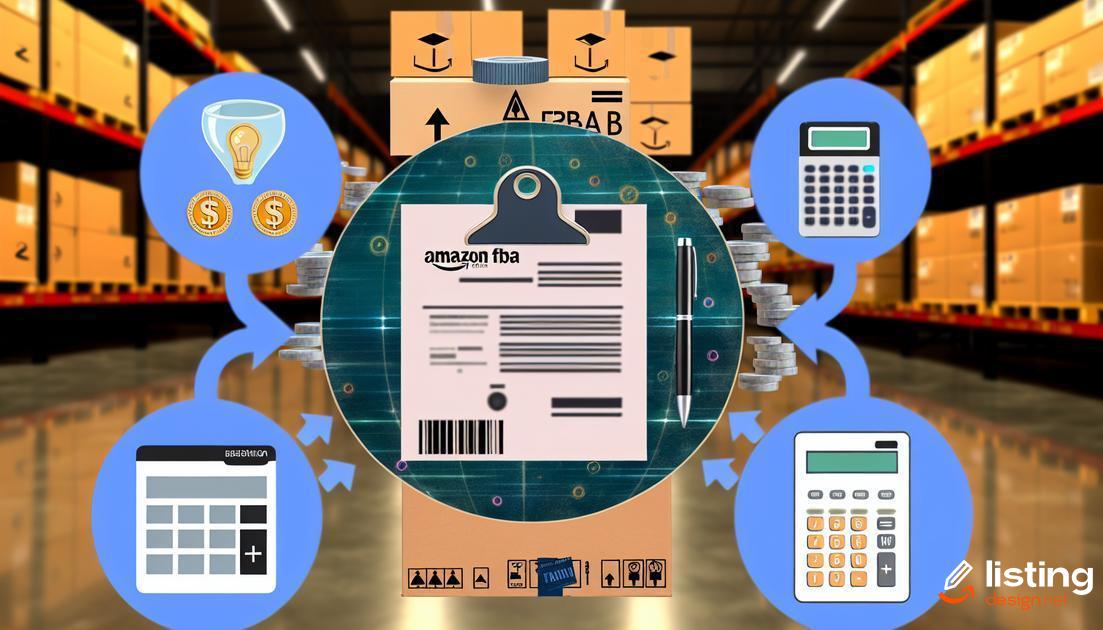Understanding Amazon FBA fees is crucial for any seller aiming to maximize profits. By grasping the different types of fees and how they are calculated, you can make informed decisions that enhance your bottom line. In this guide, we will break down the various FBA fees, provide tips to minimize them, and highlight tools that can help you track and manage these costs effectively. Let’s dive in and explore each aspect to ensure you’re not leaving money on the table.
Table of Contents
What are Amazon FBA Fees?
Amazon FBA fees are the costs associated with using Amazon’s Fulfillment by Amazon (FBA) service, which allows sellers to store products in Amazon’s fulfillment centers. When customers purchase these items, Amazon handles the packing, shipping, and customer service. These fees cover a variety of services provided by Amazon to ensure smooth operations for sellers.
Amazon FBA Fee Types: These fees can be categorized into several types, each impacting your profitability differently:
- Fulfillment Fees: Charged per unit sold, covering picking, packing, and shipping.
- Monthly Storage Fees: Billed for storing your inventory in Amazon’s warehouses based on volume occupied.
- Long-Term Storage Fees: Imposed on items stored for more than 365 days to encourage quicker sales turnover.
- Removal Fees: Applied when you choose to remove your inventory from Amazon’s storage facilities.
- Unplanned Services Fees: These occur when Amazon has to perform unexpected work, such as labeling or prepping inventory.
Understanding these fees is crucial for maintaining healthy profit margins and optimizing your selling strategy on Amazon’s platform. Each fee plays a specific role in the overall cost structure of utilizing FBA services.
Why Should You Understand FBA Fees?
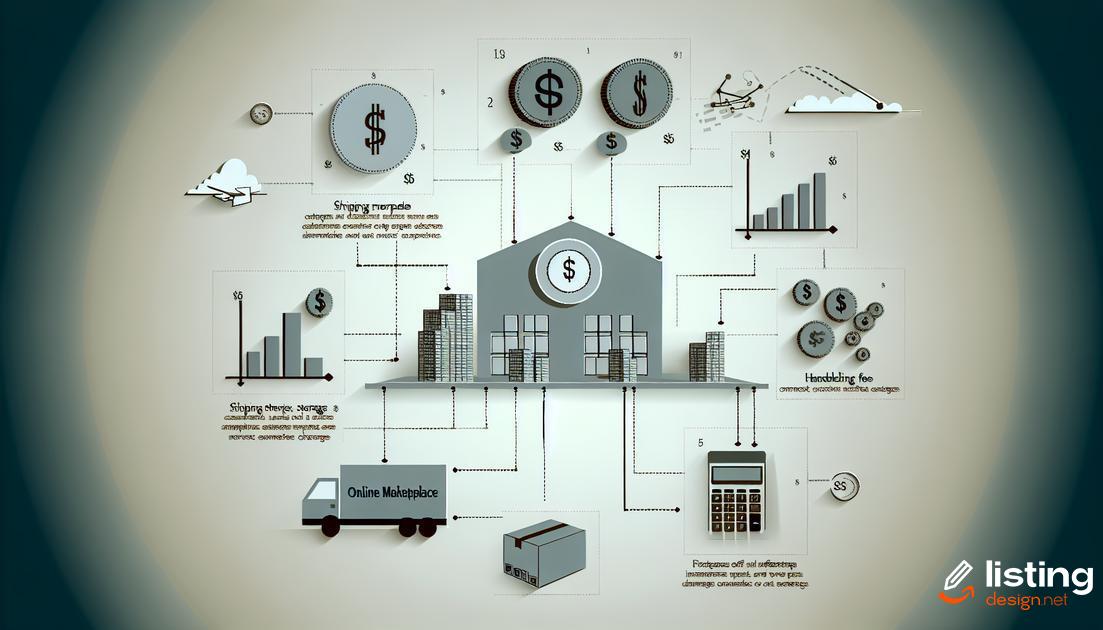
Grasping Amazon FBA fees is crucial for optimizing your e-commerce business. These fees impact your overall profitability, and knowing the breakdown can help in making informed financial decisions.
Maximize Profit Margins
By understanding the various charges, you can better manage your expenses and maximize profit margins. This knowledge allows you to choose the most cost-effective fulfillment options.
Strategic Pricing
Awareness of FBA fees helps in setting competitive product prices while ensuring a healthy margin. It empowers you to adjust prices in response to fee changes, staying competitive without incurring losses.
Inventory Management
Understanding fees associated with storage and fulfillment can guide you in managing inventory levels efficiently. Keeping an optimum inventory can reduce unnecessary storage costs and improve cash flow.
Compliance and Penalties
Being aware of all potential fees, including penalties for long-term storage or over-sized items, ensures compliance with Amazon’s policies, avoiding unexpected charges. Your business strategy must consider these fees to ensure scalability and sustainability.
Types of Amazon FBA Fees
Fulfillment Fees
One of the primary fees associated with Amazon FBA is the fulfillment fee. This charge includes picking and packing your items, shipping them to the customer, and providing customer service. The fee is typically based on the size and weight of the item. Smaller and lighter items incur lower fees, while larger and heavier items come with higher charges.
Monthly Storage Fees
Amazon charges monthly storage fees for keeping your inventory in their fulfillment centers. These fees are based on the volume of inventory stored. The rates can vary depending on the time of the year, with higher fees during the holiday season (October through December) due to increased demand for storage space.
Long-Term Storage Fees
In addition to monthly storage fees, Amazon also imposes long-term storage fees for items stored in their fulfillment centers for over 365 days. These fees are designed to encourage sellers to manage their inventory more effectively and avoid overstocking.
Removal and Disposal Fees
If you decide to remove your inventory from Amazon’s fulfillment centers or have unsellable items disposed of, you will be subject to removal and disposal fees. These fees are calculated based on the size and weight of the items being removed or disposed of.
Return Processing Fees
When a customer returns an item, Amazon charges a return processing fee. This fee covers the cost of handling the returned item and restocking it in your inventory. The fee amount depends on the size and weight of the returned product.
Unplanned Services Fees
If your inventory arrives at the fulfillment center without proper labeling or preparation, Amazon may apply unplanned services fees. These fees cover the cost of labeling, poly bagging, bubble wrapping, or any other necessary services to ensure your products are ready for fulfillment.
Referral Fees
Besides the specific FBA fees, Amazon also charges referral fees for each item sold through their platform. The referral fee is a percentage of the total sales price and varies based on the category of the item. It is important to note these fees when calculating your overall costs.
How are FBA Fees Calculated?
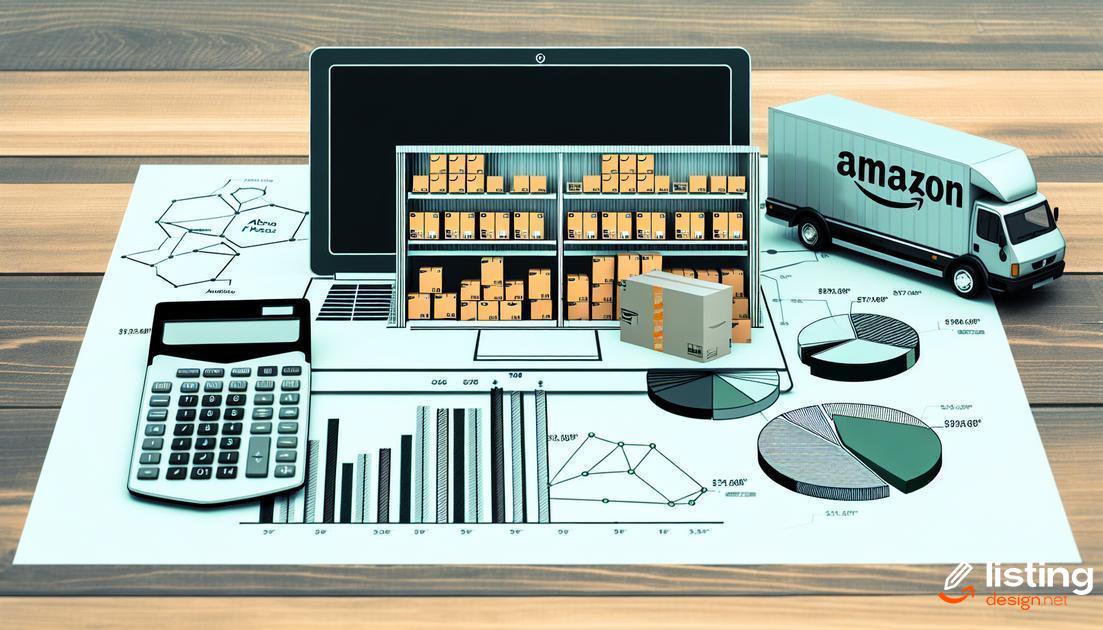
Amazon FBA fees are calculated based on several factors that reflect the cost of storing, handling, and shipping products. These fees can be divided into different categories which influence the total cost you’ll incur.
Weight and Dimensions
The weight and dimensions of your product play a crucial role in determining the fees. Heavier and larger items will incur higher charges. Amazon uses the weight handling fee, which combines unit weight and dimensional weight.
Fulfillment Fees
Fulfillment fees are incurred per unit and cover picking, packing, and shipping. These fees are influenced by the product type, its size, and its weight. For example, a standard-size item will have different rates compared to an oversized item.
Storage Fees
Products stored in Amazon’s warehouse attract monthly storage fees. These costs are based on the volume of the item stored. Items stored for longer periods may also attract long-term storage fees, which can be significantly higher to incentivize faster inventory turnover.
Referral Fees
Amazon charges a referral fee for each item sold, which is a percentage of the total sales price. The percentage may vary by category, and there might be a minimum referral fee for certain items.
Understanding how these components interact and affect the overall fees helps sellers manage costs more effectively.
Monthly Storage Fees
Monthly storage fees are charges incurred for storing your inventory in Amazon’s fulfillment centers. These fees are determined based on the volume of inventory stored, calculated in cubic feet, and the duration for which the inventory remains in storage.
Amazon applies different rates depending on the time of year:
- January to September: These months typically incur lower storage fees, providing an excellent opportunity for sellers to stock up without hefty charges. The standard rate is $0.75 per cubic foot.
- October to December: Due to higher demand and increased warehouse usage during the holiday season, storage fees increase significantly. The rate during these months is $2.40 per cubic foot.
It’s essential to monitor your inventory levels to avoid unnecessary storage costs. Items that stay in fulfillment centers for more than 365 days may incur additional long-term storage fees, making it crucial to manage inventory efficiently.
Consider these tips to minimize monthly storage fees:
- Plan Inventory: By forecasting demand accurately and planning your inventory levels accordingly, you can reduce the amount of time items spend in storage.
- Regular Check-Ups: Perform regular inventory audits to identify slow-moving items and adopt strategies, like promotions, to clear out older stock.
- Invest in Inventory Management Tools: Utilize tools and software that offer real-time insights and alerts for inventory levels, helping you maintain optimal stock levels and reduce storage fees.
Fulfillment Fees Explained
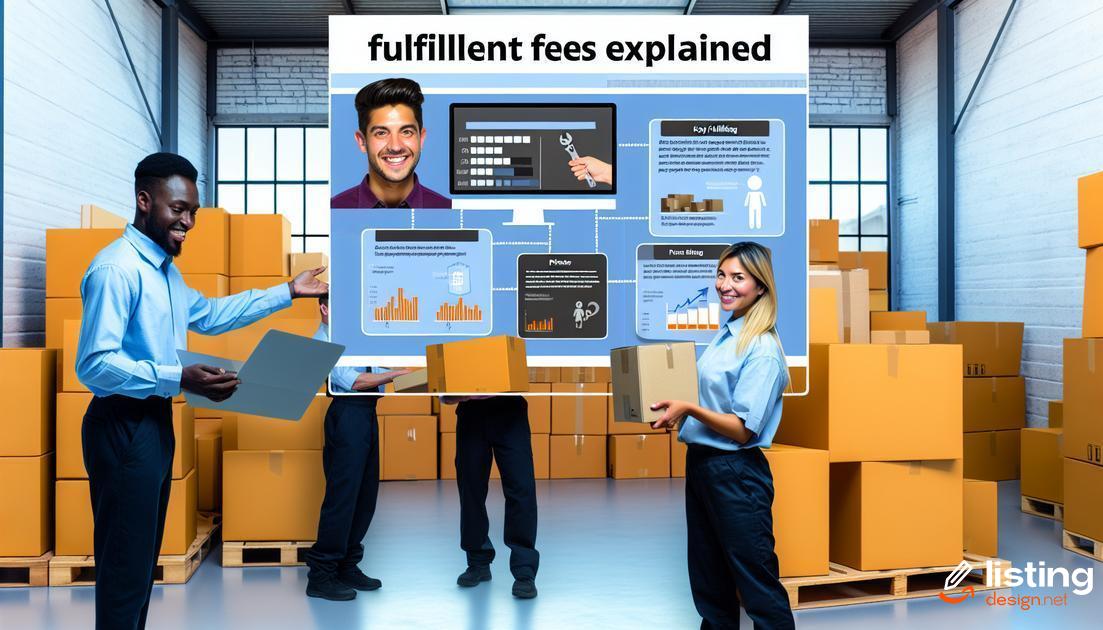
Fulfillment fees are the charges Amazon imposes on sellers for picking, packing, and shipping products to customers. These fees are a major component of the overall cost structure associated with using Fulfillment by Amazon (FBA).
Categories of Fulfillment Fees:
- Standard Size: Items that are less than or equal to 20 lbs and fit within standard dimensions.
- Oversize: Products exceeding standard size dimensions or weight limits, which incur higher fees.
Besides size and weight, other factors influencing fulfillment fees include product category and destination. For example, shipping to remote areas might cost more than urban regions.
Understanding these fees is crucial for maintaining profitability. Analyzing the different fee structures can help businesses develop strategies to reduce costs.
Long-Term Storage Fees
Amazon charges long-term storage fees for items stored in their fulfillment centers for over 365 days. These fees are levied in addition to the monthly storage fees. The aim is to encourage sellers to manage their inventory efficiently and avoid stockpiling unsold items.
Long-term storage fees are calculated at $6.90 per cubic foot or $0.15 per unit, whichever is greater. This calculation occurs on the 15th of each month. Therefore, sellers should regularly monitor inventory levels and sales velocity to prevent incurring these fees.
Inventory Health Reports
Use Amazon’s Inventory Health Reports to identify slow-moving items. These reports provide insights such as the age of your inventory and potential long-term storage fees. By managing older inventory effectively, you can reduce or even avoid these fees. Consider running promotions or discounts to clear out aging stock.
Removal Orders
If you anticipate long-term storage fees for certain items, you can create removal orders to have those items returned or disposed of. This process can be more cost-effective compared to paying long-term storage fees, especially for low-value or seasonal items.
Automated Long-Term Storage Fee Management
Some third-party tools offer automated long-term storage fee management. These tools can alert you before fees are incurred and even automate removal orders or price adjustments to help sell through inventory. Consider integrating these tools to save time and money.
Regular Audits
Conduct regular audits of your inventory to ensure you are not storing items that have low sales potential. Optimize your stock levels by frequently reevaluating your inventory turnover rate and making necessary adjustments.
Tips to Minimize FBA Fees
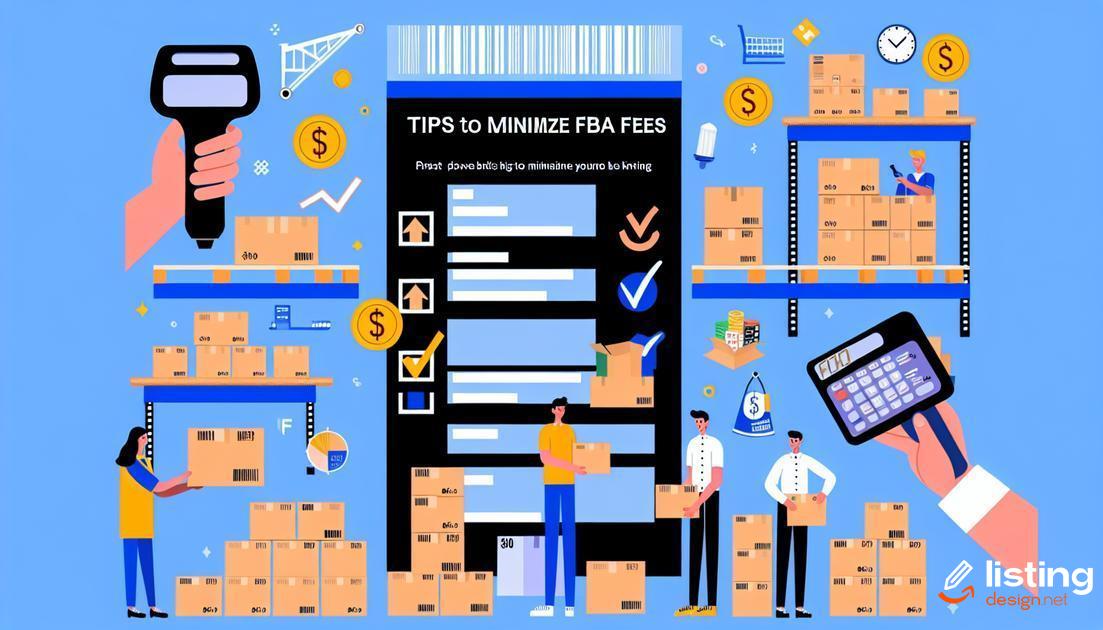
Managing Amazon FBA fees effectively is crucial for maintaining profitability. Here are some strategies to help you minimize these charges:
Optimize Your Inventory
Regularly review your inventory levels. Too much stock can lead to increased monthly storage fees and long-term storage fees. Use Amazon’s inventory management tools to help track and forecast demand accurately.
Utilize Amazon’s Promotions and Discounts
Amazons frequently offers promotions and fee discounts. Keep an eye on these opportunities and participate where it makes sense for your business. This can significantly reduce your overall costs.
Choose the Right Product Size
FBA fees vary based on the size and weight of your products. Opt for smaller and lighter items when possible. This can lower both fulfillment fees and storage fees.
Implement Efficient Packaging
Ensure your products are packaged efficiently to avoid unnecessary bulk. Compact packaging can lead to lower shipping and storage costs.
Monitor Your Inventory Performance Index Score
Amazon uses the Inventory Performance Index (IPI) to assess how well you manage your inventory. A higher IPI score can qualify you for reduced storage fees and other benefits. Regularly check your score and take steps to improve it.
Avoid Long-Term Storage Fees
Long-term storage fees can be particularly costly. To avoid these, plan your inventory turnover strategies carefully and make sure older stock is sold promptly.
Stay Updated with Amazon Policy Changes
Amazon regularly updates its fee structure and policies. Stay informed to ensure you’re taking advantage of any new cost-saving measures and avoiding unanticipated fees.
By implementing these tips, you can optimize your Amazon FBA strategy, ensuring your business remains competitive and profitable.
Tools to Track FBA Fees
Monitoring your FBA fees is crucial for maintaining profitability in your Amazon business. To help you stay on top of these costs, several tools are available that provide detailed insights and tracking capabilities.
1. Amazon Fee Calculator
The Amazon Fee Calculator is a handy tool for estimating FBA fees for specific products. By inputting relevant details, you can get an instant breakdown of fees, making it easier to plan your pricing strategies.
2. Helium 10
Helium 10 offers a suite of tools designed for Amazon sellers, including fee tracking features. With Helium 10, you can analyze how fees impact your overall profitability and make informed decisions.
3. SellerApp
SellerApp provides robust analytics, including detailed fee tracking. This tool helps you understand various fee components and alerts you about unexpected fee changes.
4. AMZBase
AMZBase is another useful tool for tracking FBA fees. It’s especially helpful for sellers who need to perform quick calculations and compare fees across different products.
5. Fetcher
Fetcher is an excellent tool for tracking expenses, including FBA fees. It integrates with your seller account to provide real-time data, helping you manage costs effectively.
6. Sellics
Sellics offers comprehensive fee tracking and analytics features. With Sellics, you can gain deeper insights into your FBA costs and identify areas where you can save money.
Using these tools can help you stay informed about your FBA fees, ensuring that you manage your Amazon business more efficiently and profitably.
Common Mistakes and How to Avoid Them

It’s crucial to be aware of the common pitfalls that can inflate your Amazon FBA fees.
1. Not Monitoring Inventory Levels
Failing to track your inventory can lead to overstocking, resulting in increased long-term storage fees. Use inventory management tools to keep an eye on stock levels.
2. Ignoring Product Dimensions and Weight
Amazon calculates fulfillment fees based on the size and weight of your products. Ensure accurate measurement and categorization to avoid unexpected charges.
3. Neglecting Seasonal Sales Data
Not planning for seasonal variations can lead to either overstock or stockouts, both of which are costly. Analyze past sales data to better predict inventory needs.
4. Overlooking Promotional Fees
Promotions and discounts can eat into your margins if not properly planned. Understand the fees associated with running promotions to manage your budget effectively.
5. Poor Labeling Practices
Incorrect or missing labels can result in your products being stored inappropriately, leading to higher fees. Always double-check labeling guidelines.
6. Inadequate Product Prep
Improper packaging can cause damage during storage or transit, leading to additional fees for repackaging or worse, customer returns. Follow Amazon’s prep requirements to the letter.
7. Not Using FBA Calculator
Amazon provides an FBA calculator to estimate costs. Neglecting this tool can result in underestimating your fees. Regularly use it to project your expenses.
8. Mismanaging Removal Orders
If you need to remove inventory, do it efficiently. Mismanagement can lead to unnecessary fees and delays. Plan removal orders carefully to minimize costs.
9. Lack of Regular Audits
Conducting regular fee audits helps you catch discrepancies and ensure you’re not overpaying. Set a schedule for monthly or quarterly reviews of your Amazon FBA fees.
10. Ignoring Customer Returns
Returns are part of doing business, but they can be costly if not managed well. Develop a process for handling returns promptly to avoid excess fees.
Success Stories: Reducing FBA Fees
Throughout their selling journey, many Amazon sellers have managed to lower their FBA fees significantly. These success stories illustrate valuable strategies and best practices. By understanding and optimizing various aspects of their FBA operations, these sellers have achieved remarkable savings.
One such success story comes from a small business owner who noticed high long-term storage fees. By implementing effective inventory management techniques, they managed to cut down these fees by 30% within six months. Regularly monitoring inventory health and removing slow-moving items were key elements of their strategy.
In another instance, a seller capitalized on utilizing Amazon’s Fee Preview Report to identify and address listing issues that were causing higher fulfillment fees. This proactive approach enabled them to adjust product dimensions and weights accurately, leading to a substantial reduction in fees.
Another inspiring story involves a seller who made smart use of Amazon’s various storage plans and warehousing options. By strategically choosing the right storage solutions based on their sales patterns and product turnover rates, they were able to minimize monthly storage costs while maintaining efficient order fulfillment.
Many successful sellers also emphasize the importance of regularly auditing FBA fees and shipments. One seller discovered discrepancies in fees due to incorrect weight and dimensional data. By promptly reaching out to Amazon and providing accurate measurements, they received significant refunds and corrected future fees.
These real-world examples demonstrate that with diligent monitoring, strategic planning, and the right resources, it is possible to significantly reduce FBA fees, thereby boosting overall profitability.
Future Trends in Amazon FBA Fees

The landscape of Amazon FBA fees is continually evolving, driven by various market forces and Amazon’s strategic shifts. One emerging trend is the increasing reliance on dynamic pricing models. Dynamic pricing allows for fee adjustments based on factors such as time of year, product category, and seller performance metrics. This model can provide flexibility but also requires sellers to remain vigilant about their margins.
Another trend is the growing complexity of fulfillment fees. With Amazon’s expansion into international markets and the adoption of advanced fulfillment technologies, there are more fee categories to consider. For example, cross-border fulfillment now has specific fees that differ substantially from domestic fulfillment.
The rise of eco-friendly packaging initiatives is also influencing FBA fees. Amazon has been pushing for more sustainable practices, which includes incentivizing sellers who opt for eco-friendly packaging solutions. This initiative could lead to new fee structures that favor sellers contributing to sustainability goals.
A potential gamechanger in the future could be AI-driven fee optimization. Amazon is likely to implement machine learning algorithms to provide customized fee structures based on predictive analytics. This would not only help Amazon optimize its logistics but also enable sellers to better strategize their pricing, inventory, and fulfillment options.
Lastly, expect to see more rigorous enforcement of long-term storage fees as Amazon continues to optimize warehouse space. With high inventory turnover becoming a priority, sellers maintaining slow-moving products may face increased costs, urging them to manage their inventory more effectively.

